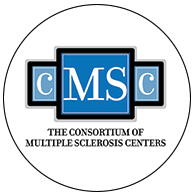Multiple sclerosis (MS) risk may increase with obesity in children and teens. The researchers suspect that the hormone leptin, responsible for inhibiting hunger, may be mediating this association between obesity and the development of MS. The study was led by Dr. Jorge Correale who explained, “We need to do more work to understand the mechanisms involved in all the different environmental/habitual factors, including body mass index. If we understand mechanisms, we can propose treatment alternatives to decrease the risk to develop the disease or to prevent increase in the severity of the disease.”
For the study, body mass index (BMI) was calculated for 210 multiple sclerosis patients and 210 controls aged 15 to 20. The results showed that those who were considered obese – a BMI over 30 – at the age of 20 had double the risk of developing multiple sclerosis, compared to those who were not obese.
Hormone levels were measured as well, along with cytokine-producing cells. The researchers found that BMI increased with the raising serum leptin levels. On the other hand, high BMI was found to be associated with decreased levels of vitamin D. Dr. Correale added, “Leptin promotes inflammatory responses in the body, which could potentially explain the link between obesity and MS.”
“During the last few years, we have started to understand more about different factors involved in the genesis of MS. There is a genetic predisposition, and in addition some environmental factors or habits that are thought to increase the risk of developing the disease, such as smoking, low vitamin D, and Epstein-Barr virus infection. In addition, in animal models, increased amount of salt in the diet is thought to increase risk, and now it appears that obesity is an additional habit factor that can increase the risk of developing MS,” Dr. Correale continued.
Previous research has found a link between high BMI and risk of multiple sclerosis levels as well. Additionally, high BMI has been linked with lower vitamin D levels, another risk factor for multiple sclerosis. “Furthermore, leptin inhibits the actions, and reduces the number of regulatory cells that under normal conditions control auto-aggressive cells. These 2 mechanisms explain, at least in part, some of the obesity effects.”
“Although leptin induces inflammatory mechanisms, it also appears to have a beneficial effect on neuronal survival and myelination. Thus, mice deficient in leptin or its receptor display reduced brain weight and immature pattern of expression of synaptic and glial proteins. Thus, a clear balance between the dichotomous actions of leptin should be achieved,” Dr. Correale concluded.
Multiple sclerosis risk may be linked with obesity in children and teenage girls
In an alternative study, researchers found that the risk of multiple sclerosis may be higher in obese children and teenage girls. Study author Annette Langer-Gould said, “Over the last 30 years, childhood obesity has tripled. In our study, the risk of pediatric MS was highest among moderately and extremely obese teenage girls, suggesting that the rate of pediatric MS cases is likely to increase as the childhood obesity epidemic continues.”
The researchers looked at 75 children and adolescents diagnosed with multiple sclerosis aged two to 18. Body mass index prior to MS diagnosis was obtained. The multiple sclerosis children were compared to 913,097 children without multiple sclerosis. Children were divided into weight categories of normal, overweight, moderately obese, and extremely obese. Of the children with multiple sclerosis, 50.6 percent were overweight or obese, compared to 36.6 percent of the children without multiple sclerosis.
The researchers found that the risk of multiple sclerosis was 1.5 times greater for overweight girls, compared to girls who were of normal weight. MS risk was 1.8 times higher in moderately obese girls than normal weight girls and four times higher in severely obese girls. The same association was not found in boys.
Langer-Gould concluded, “Even though pediatric MS remains rare, our study suggests that parents or caregivers of obese teenagers should pay attention to symptoms such as tingling and numbness or limb weakness, and bring them to a doctor’s attention.”










